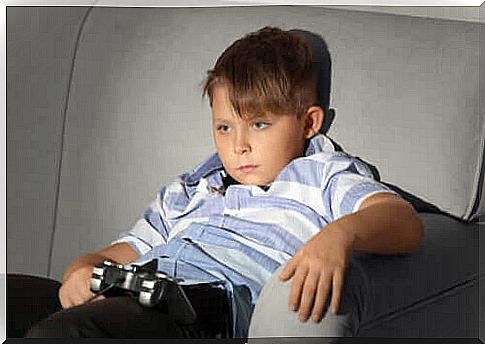Childhood Sedentary Lifestyle: A Growing Epidemic
Childhood sedentary lifestyle is a problem that has gradually worsened in the Western world. Today, children are more sedentary than active.

Childhood inactivity is a growing problem in almost all parts of the world. This is why it is called an epidemic. This situation is due to multiple factors and is also a potential trigger for future health problems.
In a recent report, the World Health Organization pointed out that around 70% of children and up to 88% of girls under the age of 10 do not engage in daily physical activity appropriate for their age. This means that infantile sedentary lifestyle affects on average 79% of children.
Physical activity plays a key role in health at all stages of life. However, during childhood, it is an essential factor for normal development. This is why the medical sector is very concerned about the gradual increase in the sedentary lifestyle of children.
Childhood sedentary lifestyle

The word “sedentary” comes from the Latin root “sedentarius” which means “to be seated”. Sedentary lifestyle is defined in several ways and one of the most widely accepted is that which indicates that a person is sedentary when they spend less than 150 kilocalories per day for moderate intensity physical activities.
Regarding the sedentary lifestyle of children, the World Health Organization has indicated that a child is sedentary if they do less than 60 minutes of physical activity per day. Studies indicate that the vast majority of Western children do not meet this daily activity quota.
Worse yet, children’s inactivity is often accompanied by other harmful factors such as poor nutrition. All of this creates the conditions for there to be more obese children than ever before, with all the consequences that entails.
Risk factors for a sedentary lifestyle
Continuous movement during childhood is a factor that has a decisive influence on psychomotor development. Likewise, it is the movement that allows one to discover oneself and to discover the world. This, in turn, has a powerful influence on intellectual and psychosocial development.
Why is a sedentary lifestyle reaching such proportions today? Here are some of the factors that favor it:
- Physiological factors : the closer children get to puberty, the less physical activity they take and the more intellectually active they are
- Sociocultural factors : the evolution of games and forms of entertainment, as well as the lack of availability of parents influence the development of a more sedentary lifestyle. In addition, movements are not sufficiently stimulated in children.
- Psychological factors : Lack of physical activity limits skill development and this, in turn, makes children more sedentary due to their self-perception of their incompetence in activities that require skill. physical
The effects of a sedentary lifestyle in children

Childhood inactivity has many negative consequences, some of which have long-term effects. The most relevant issues are, among others, the following:
- Overweight and Obesity : Lack of exercise, especially when combined with an inadequate diet, leads to overweight and obesity. These increase the risk of suffering from cardiovascular disease and diabetes
- Stagnant psychosocial development : Children who are not physically active are less confident, have less social skills, and generally perform worse in school
- Development of addictive behavior : new technologies have an addictive effect. Especially on immature minds like those of children. This limits their normal psychological development and can lead to other personality or behavior problems.
do not forget
It is no exaggeration to say that childhood sedentary lifestyle can completely ruin a person’s life. Not developing the physical and intellectual skills corresponding to normal growth is building a life with significant limits. If, in addition, problems of overweight or obesity appear, there is a serious risk of chronic diseases.
It is essential that adults provide opportunities for physical activity for children. Parents and teachers / guardians of young children have a key role to play in this area. We fight sedentary lifestyle through lifestyle changes.
Children are naturally inclined to be physically active and the early years are crucial in this regard. Greater commitment is needed from adults to support young children in their desire to explore the world by moving around, playing with other children and getting to know nature.









